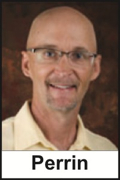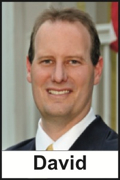Rascals case in brief
In the beginning, in 1989, more than 90 children at the Little Rascals Day Care Center in Edenton, North Carolina, accused a total of 20 adults with 429 instances of sexual abuse over a three-year period. It may have all begun with one parent’s complaint about punishment given her child.
Among the alleged perpetrators: the sheriff and mayor. But prosecutors would charge only Robin Byrum, Darlene Harris, Elizabeth “Betsy” Kelly, Robert “Bob” Kelly, Willard Scott Privott, Shelley Stone and Dawn Wilson – the Edenton 7.
Along with sodomy and beatings, allegations included a baby killed with a handgun, a child being hung upside down from a tree and being set on fire and countless other fantastic incidents involving spaceships, hot air balloons, pirate ships and trained sharks.
By the time prosecutors dropped the last charges in 1997, Little Rascals had become North Carolina’s longest and most costly criminal trial. Prosecutors kept defendants jailed in hopes at least one would turn against their supposed co-conspirators. Remarkably, none did. Another shameful record: Five defendants had to wait longer to face their accusers in court than anyone else in North Carolina history.
Between 1991 and 1997, Ofra Bikel produced three extraordinary episodes on the Little Rascals case for the PBS series “Frontline.” Although “Innocence Lost” did not deter prosecutors, it exposed their tactics and fostered nationwide skepticism and dismay.
With each passing year, the absurdity of the Little Rascals charges has become more obvious. But no admission of error has ever come from prosecutors, police, interviewers or parents. This site is devoted to the issues raised by this case.
On Facebook
Click for earlier Facebook posts archived on this site
Click to go to
Today’s random selection from the Little Rascals Day Care archives….
Click for earlier Facebook posts archived on this site
Click to go to
Today’s random selection from the Little Rascals Day Care archives….
‘Satanic ritual abuse’ loses its place in textbook
 April 26, 2013
April 26, 2013
By 1997, when the college textbook “Family Violence Across the Lifespan” was first published, the most grievous excesses of the day-care ritual-abuse panic had passed (although it would be two more years before Little Rascals prosecutors dropped a final, unrelated charge against Bob Kelly).
The authors, social scientists at Pepperdine University, devoted entire sections to “Do Children Fabricate Reports of Child Sexual Abuse?” and “The Satanic Ritual Abuse Controversy.” More on those issues here.
Their approach is thoughtfully skeptical, but they can’t quite bring themselves to call baloney on those peers whose ill-conceived claims ginned up the “controversy” or whose gullibility prolonged it. For example:
“If there is so little evidence confirming the existence of SRA, why do so many perceive the SRA threat to be real? One reason is that… therapists, police officers and child protection authorities, who are often required to attend seminars on current developments in their field, are exposed to SRA ‘experts’…. These seminars tend to employ proselytizing techniques characteristic of organizations seeking recruits. Many well-meaning helping professionals, who are generally motivated by the desire to help abused clients, become convinced of the existence of SRA through these seminars (such as the one at Kill Devil Hills)….”
“Family Violence…” has proved popular enough to justify a third edition (2011), in which all mention of ritual abuse has been removed.
I asked sociologist Robin D. Perrin, one of the authors, to trace his thinking on the subject between editions.
“I suppose one could argue that the ‘Satanic Ritual Abuse’ issue is a bit dated at this point,” he replied, “as the Satanism scare has mostly faded into the sunset. But it is still a fascinating page in history, if nothing else….
“As for our approach on these issues, I think ‘thoughtfully skeptical’ is probably fair. You are correct that we fall far short of an outright denial of the validity of all ritual abuse claims. I am quite certain we are not in position to do that. In fact, given the history of mistreatment of children (both ‘then’ and ‘now’) I have no doubt that ‘ritual’ abuse has occurred (depending on how it is defined, of course).”
A DA unafraid ‘to go where the truth leads….’
 March 25, 2013
March 25, 2013
“I really see us as sharing the goal of making sure this conviction rests on credible and substantial evidence. I’m going to go where the truth leads in this matter.”
– Jon David, district attorney in Brunswick, Columbus and Bladen counties,
responding to a request from the North Carolina Center on Actual Innocence
to review DNA evidence in the case of Joseph Sledge
Mandy Locke’s account in the News & Observer will inspire confidence in neither the competence nor the good faith of North Carolina justice. Sledge, imprisoned 34 years for a double murder, has encountered unspeakable frustrations in his pursuit of exoneration.
Like Willie Grimes, however, Sledge is at last benefiting from a district attorney unimpaired with willful blindness toward his office’s past failures.
If the Edenton Seven are ever able to achieve true exoneration from the state, it likely won’t be with the acquiescence of the prosecutors, much less their assistance.
Weighing the evidence vs. ‘betraying the children’
March 1, 2013
“Now, you can ask yourself why did the jury believe these things? How could the jury believe that, as in the Amirault (day-care ritual-abuse) case, old Mrs. Amirault, one of the most upright of citizens, had suddenly turned at the age of 67 into a child molester who raped children?
“She was accused and convicted of inserting a stick into the body orifice of a little boy, tied him to a tree stark naked in front of everyone, in front of the house in Massachusetts, and the children all attested to this, the ones that were part of the case. Now, who would believe this?…
“But if you have a prosecutor who tells the jury, ‘Here are all of these brave children. These brave children have come forward to ask that you credit their story because they have endured so much suffering, and if you don’t do this, you’re betraying the children’ — it is not easy to find a jury that is stalwart enough to say, ‘Hey, you know, this really is a pile of nonsense.’”
– From a C-SPAN “Booknotes” interview with Dorothy Rabinowitz, author of “No Crueler Tyrannies: Accusation, False Witness and Other Terrors of Our Times” (May 4, 2003).
Who do that voodoo? Why, prosecution’s ‘experts’
Nov. 14, 2012
“Prosecutors building these high-profile cases well understood the problems posed by the strange charges and the fantasy-riddled narratives of the child plaintiffs. How could they make credible to jurors the extraordinary prowess of defendants who could assault whole classes of preschoolers daily, dressing and undressing 20 or more, all accomplished in a half hour’s time, in a busy school, with no one noticing, no child ever sent home with mismatched socks?…
“Jurors had to be given a reason that 4-year-olds could be raped with butcher knives that left them uninjured, could be tied naked to trees and raped in broad daylight….
“The state’s solution lay with their experts – witnesses who could explain and render such mysteries comprehensible.”
– From “No Crueler Tyrannies: Accusation, False Witness and other Terrors of Our Times” by Dorothy Rabinowitz (2003)
Ah, those invaluable mystery-solving experts – such as Eileen Treacy of the Kelly Michaels trial, Kee MacFarlane of McMartin and of course Mark “Where there’s smoke….” Everson of Little Rascals.
What would prosecutors have done without them? (Probably, a helluva lot less harm.)











0 CommentsComment on Facebook